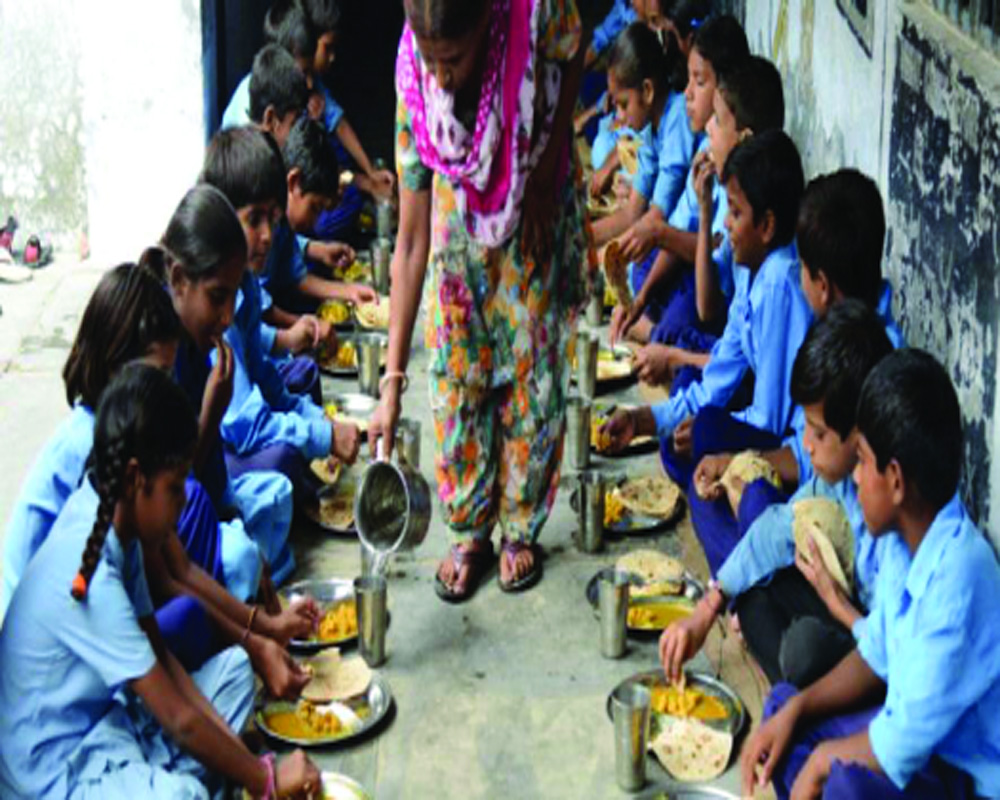The accuracy and intent behind GHI rankings are suspect. Does the GHI truly reflect India’s reality, or is it a motivated attempt to malign India’s image?
The recent Global Hunger Index (GHI) report, which places India at a dismal 105th position out of 127 countries, has raised eyebrows and sparked considerable debate. While hunger and malnutrition remain pressing global issues, the methodology and conclusions of the GHI, co-authored by two non-governmental organisations—Irish-based Concern Worldwide and German Welthungerhilfe—have drawn criticism, particularly from the Indian government and sections of society.
There is a growing concern that such reports may not just reflect statistics but also carry political and geopolitical undertones aimed at tarnishing India’s image on the world stage. The GHI is based on four key indicators: the prevalence of undernourishment, child wasting, child stunting, and child mortality. The scores from these factors are compiled to place countries on a scale from zero (no hunger) to 100 (extreme hunger), with countries scoring closer to zero seen as having little or no hunger issues. India’s score of 27.3 puts it in the “serious” hunger category, alongside 42 other countries. Critics of the GHI have raised several concerns about the methodology used in calculating India’s score.
Firstly, the reliance on child mortality and child stunting indicators as primary components of the hunger index is problematic. India is a country with a large population, and while child malnutrition is a valid concern, this issue is not unique to India but rather shared by other developing countries. By focusing heavily on this aspect, the report seems to disproportionately penalise India. Additionally, the GHI report uses outdated data from global sources such as the World Health Organisation and the Food and Agriculture Organisation (FAO). India, like many countries, has been undergoing significant improvements in food security through government initiatives such as the National Food Security Act, the Midday Meal Scheme, and public distribution system reforms. However, these efforts do not seem to be adequately represented in the data used for the GHI. Many believe that the Global Hunger Index is not just about numbers but also about shaping narratives.
By positioning India in such a negative light, the report seems to overshadow the country’s genuine achievements. India’s economy is among the fastest-growing in the world, and its agricultural output has been consistently high. The country’s food production is more than sufficient to meet the needs of its population. India has become a net exporter of food grains and has successfully launched programs to improve access to food for its vast population. Given this backdrop, how can India be ranked lower than countries facing severe internal strife, economic collapse and war, such as Afghanistan or even smaller nations like Bangladesh and Nepal?
It’s essential to question the intentions behind these rankings. Are they an honest reflection of hunger, or do they serve other interests? Reports like the Global Hunger Index can have far-reaching consequences, not just for the countries they assess but also for global perceptions.
The fact that the organisations behind the GHI—Concern Worldwide (Irish) and Welthungerhilfe (German)—hail from Western countries has not gone unnoticed. It raises the question of whether the index is truly impartial or if it subtly reflects geopolitical biases. India has made significant strides in addressing hunger and malnutrition, but it seems that these efforts are often ignored or underplayed by such indices. For instance, the Pradhan Mantri Garib Kalyan Anna Yojana, which provided free food grains to over 80 crore people during the COVID-19 pandemic, is one of the world’s largest food security initiatives. The fact that India could provide this level of support during a global crisis contradicts the narrative of widespread hunger and undernourishment. To deny that hunger exists in India would be dishonest, but the situation is far more complex than a single ranking can capture. Hunger is not a static issue; it is deeply intertwined with poverty, access to education, healthcare, and infrastructure.
The Indian government has been tackling these root causes of hunger through a multi-pronged approach that includes social welfare schemes, employment generation programmes like MGNREGA, and nutrition programs targeted at women and children.
Programmes such as the Integrated Child Development Services (ICDS) aim to provide supplementary nutrition to millions of pregnant and lactating women, along with children under six years of age. Meanwhile, the Midday Meal Scheme, which serves nutritious meals to school children, has had a significant impact on reducing malnutrition.
Despite these efforts, it is undeniable that India still faces challenges. The legacy of poverty, the vast size and population of the country, and regional disparities make it difficult to eliminate hunger overnight. The concerns raised by the Indian government about the Global Hunger Index are not without merit. The index, while claiming to provide an objective measure of hunger, fails to capture the ground realities of individual nations. India, being the second-most populous country in the world, is bound to face issues that smaller nations with more homogeneous populations do not.
By painting India as a country where hunger is rampant, the GHI risks creating a false narrative that undermines the substantial progress made by the country. It also risks discouraging the efforts of those working tirelessly on the ground to ensure that no one goes to bed hungry.
What is needed is not biased rankings or politically motivated reports but genuine collaboration between nations to tackle the global hunger crisis. As we reflect on the GHI, one thing is clear: statistics alone do not tell the whole story.
(The writer is an associate professor; views are personal)
























